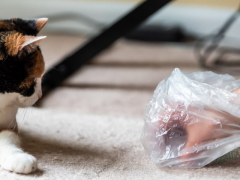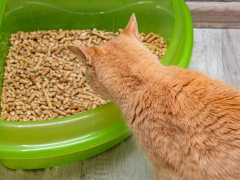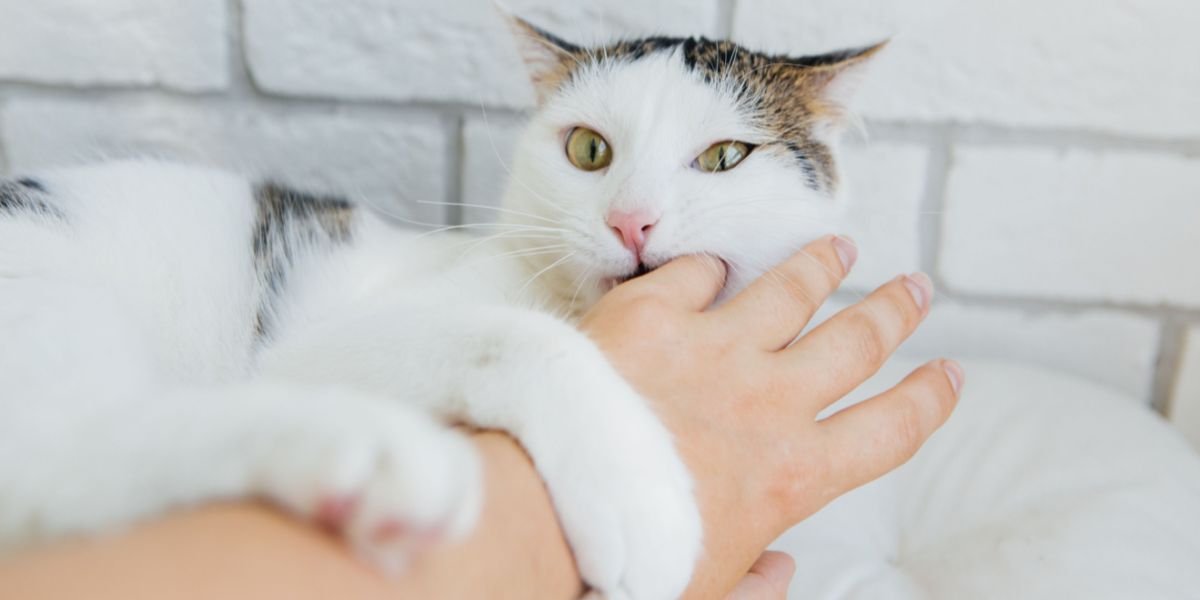
As cat owners, we’ve all experienced it, one minute you’re petting your cat and she’s purring away, seemingly enjoying a cuddle, and the next minute you feel teeth on your hand and you’re left wondering what’s just happened!
You might hear these nips referred to as “petting-induced aggression.” To understand why this aggressive behavior happens when you pet your cat, we first need to understand the difference between these nips during petting and an aggressive bite resulting from fear or defensiveness.
Also Read: 10 Causes Of Aggression In Cats And How To Help
What Is the Difference Between a Petting Bite and an Aggressive Bite?
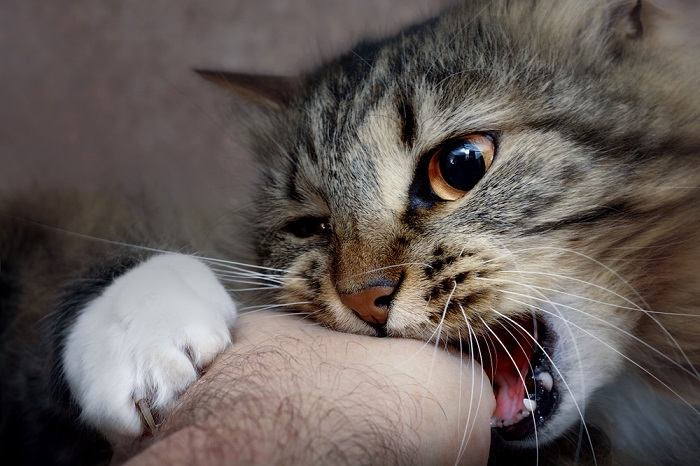
Overstimulation is one of the most common reasons for your cat to suddenly bite you during a petting session.
A bite during a petting session is a gentler bite that you sometimes receive whilst stroking your cat. Usually, they do not break the skin and you will only feel the gentle pressure of your cat’s teeth on your skin.
Aggressive bites will usually break the skin and cause bleeding and significant pain. An aggressive bite will usually occur after your cat has given you pre-warning signs, such as growling, hissing, spitting, or swiping. Sudden bites that occur during petting usually occur without warning and are a common cat behavior.
Any cat bite that breaks the skin has the potential to result in a serious infection so always wash the bite wound well and seek medical advice straight away.
Also Read: Why Does My Cat Bite Me? And How to Get It to Stop
Why Does My Cat Bite Me During or After Petting?
Cats bite for several different reasons. Often, the context of the bite is important to help distinguish why a cat has bitten.
1. Fear
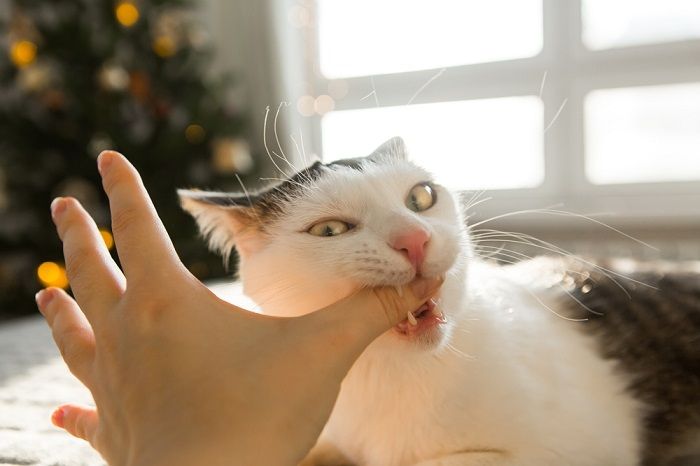
Cats might bite when they are afraid, but you will usually see warning signs like flattened ears and hissing.
A cat that is scared or fearful is more prone to biting aggressively, for example at a vet visit. Usually, there will be warning signs before the bite occurs, such as flattened ears, a rapidly flicking tail, growling, hissing, spitting, and swiping.
If you go to pet your cat in an attempt to comfort them when they are in this state, there is a strong chance that they might bite you out of fear, even if they aren’t normally aggressive.
Also Read: 8 Ways To Help Your Shy and Fearful Cat Be Confident
2. Frustration
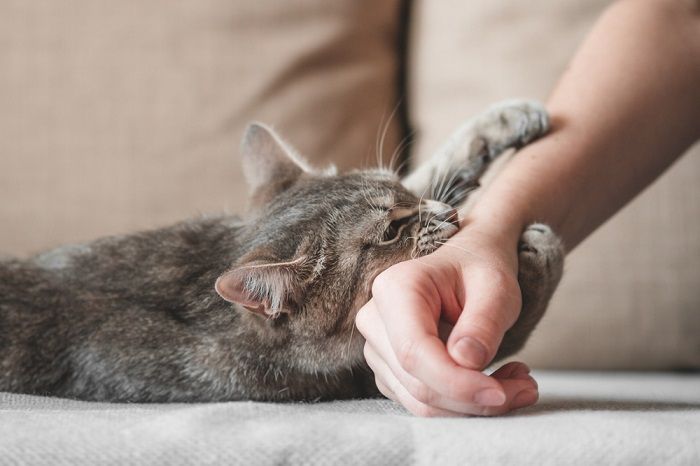
Sometimes cats bite gently to say they’ve had enough of what you’re doing.
Cats can become easily overstimulated which can lead to frustration. One of the most common ways in which your cat can become overstimulated is through petting. Cats have a much lower tolerance for being petted than dogs do, and different cats will take different amounts of time to reach their limit.
Cats will often express frustration through biting, often as a warning nip as opposed to an aggressive bite. Usually, there will be warning signs preceding the bite that your cat is reaching her tolerance level, such as tail flicking, wide dilated pupils, or vocalizing. You should leave your cat alone if she is showing any of these signs.
3. Pain
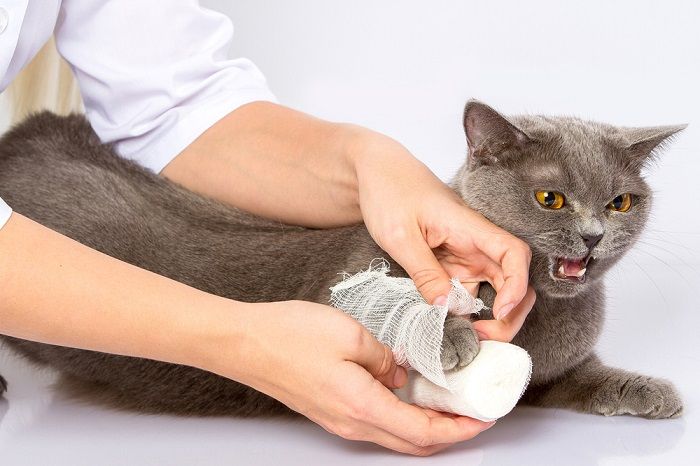
Cats that are in pain might bite, even if they are usually very docile.
A cat that is in pain is liable to bite, even if they are not normally aggressive. Just like in people, pain can make them grumpy and if they are injured or painful, and you unintentionally make the pain worse, for example by stroking them or picking them up, they may lash out and bite in an attempt to get you to leave them alone.
Pain from medical conditions such as arthritis or dental disease could lead to aggression when your cat is petted. If your cat is suddenly more grumpy than usual or showing any signs of discomfort, take her to your veterinarian to rule out any underlying medical causes for her behavior.
Also Read: The Complete Guide To Dental Cleaning For Cats
4. Kitten Biting
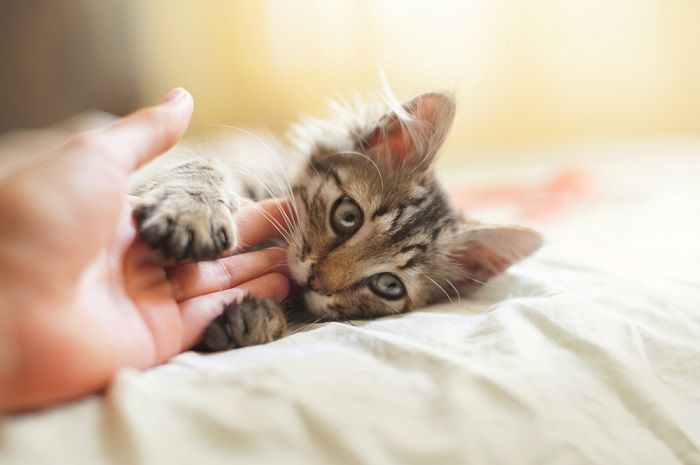
It’s important to teach kittens that biting human skin during play is not allowed.
Kittens often bite one another during play. Biting is an important part of their development as they learn to hunt and learn to communicate with their littermates and other cats. From about 10 weeks of age, kittens will begin to teethe and this is another reason why they might be biting anything and everything, including you!
Biting is their way of attempting to relieve the discomfort as their adult teeth erupt. Teething biting will usually manifest as a gentle gnawing on your hand or toy, rather than a sudden bite that occurs from nowhere or during play.
Redirect your kitten’s playful biting onto toys and be sure to set aside plenty of time to play with her in short sessions throughout the day.
Also Read: How To Take Care Of A Kitten: The Complete Guide
5. Playfulness
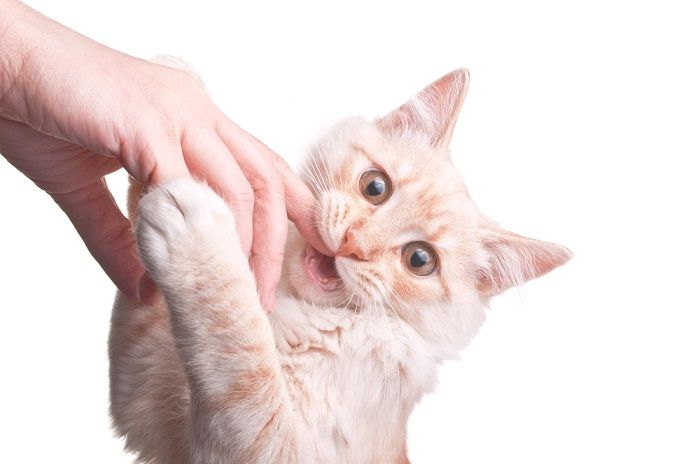
To avoid an accidental bite during playtime, it’s best not to play with your cat using your hands.
Adult cats also love playtime and will often bite down on toys and other objects that they play with as they mimic hunting and “killing.” If you tend to play with your cat with your hands, you are liable to get bitten during play sessions!
Try and teach your cat from a young age to play with toys rather than hands. Whilst the occasional gentle bite from a kitten might not hurt and even seem cute, a bite from an adult cat is a different story, even if it occurs during play!
Also Read: The 12 Best Cat Toys: Keep Your Cat Fit And Happy With These Irresistible Toys
6. Attention
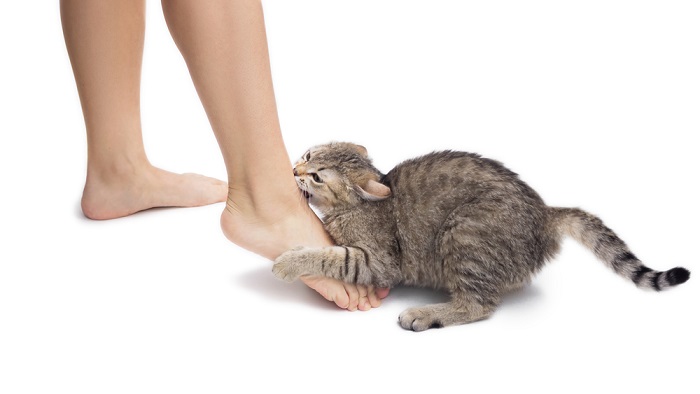
Biting for attention is a behavior that should be addressed head on so it does not develop into a serious issue.
Some cats learn to bite as a way of getting your attention. If your cat gently nips you and then rubs their head against you, or then runs to a toy, it’s likely attention-seeking behavior.
If you want to discourage this behavior, do not engage with what your cat is asking for immediately. Instead, ignore your cat for a while before stroking or playing with them on your own terms.
Also Read: Why Does My Cat Lick Me Then Bite Me?
7. Affection
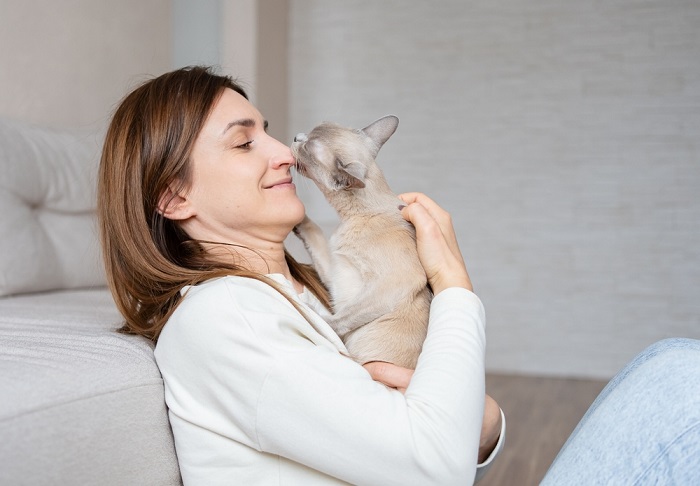
Love bites are gentle little nips that are a sign of affection.
Sometimes referred to as “love bites,” some cats will nip or nibble you as a sign of affection. These will sometimes be accompanied by purring. Love bites are more common in female cats that have previously had a litter of kittens.
Mother cats will often groom their kittens with little nibbles and bites and may show similar behavior toward you.
Also Read: 10 Signs You Might Have A Clingy Cat
My Cat Wants to Be Petted but Then Bites
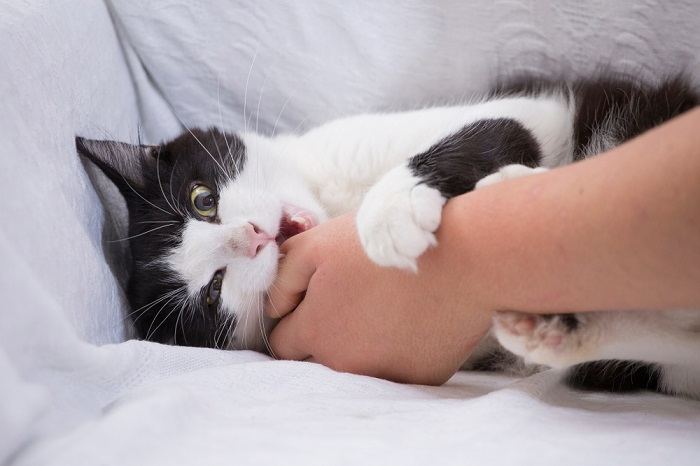
Most cats do not like their belly being touched, even if they do roll over and seem like they’re inviting you to stroke them there.
It often seems as though cats can go from enjoying being stroked to having had enough in the space of a second. This “petting aggression” can seem confusing to cat owners but it’s really just your cat’s way of telling you that they have had enough of your petting—for now.
Overstimulation is one of the most common reasons for your cat to suddenly bite you during a petting session. It can often seem as though it comes out of nowhere but there are often subtle signs that your cat has reached their limit.
These are likely to be slightly different from cat to cat but could include things such as:
- Tail flicking
- Flattening of the ears
- Rippling of the skin on the back
- Wide dilated pupils
- Stopping purring
How Can I Stop My Cat From Biting Me When I Pet Her?
Getting to know your cat and their body language will help you to determine when they are nearing their tolerance level. Paying attention to the subtle signs that your cat gives you before biting means that you can stop petting sessions before they reach this stage.
You can try and count the number of strokes your cat likes before you see the signs that they are getting annoyed. This can help you determine when enough is enough!
Also, bear in mind that most cats prefer to be stroked around their face and head, so stroking them elsewhere on their body may mean that they reach their tolerance level faster than they would otherwise. Most cats do not like their belly being touched, even if they do roll over and seem like they’re inviting you to stroke them there. However, all cats are different and there is always the exception to the rule!
If your cat’s biting behavior is becoming problematic, then speak to your veterinarian who can refer you to a cat behaviorist for more tailored behavior advice.
Also Read: Why Do Cats Show Their Bellies?
Conclusion
Cat behavior is complex and although it can be confusing when your cat seemingly bites you out of nowhere after enjoying being stroked, hopefully, you now understand some of the reasons why it happens!
The key thing to remember is that it’s usually just your cat’s way of letting you know that they have had enough of your attention and they want you to stop. Once you start to recognize your cat’s warning signs, you’ll soon learn that their body language is actually giving you an advance warning before they bite you!
Also Read: 5 Easy Tricks to Teach Your Cat According to a Cat Behaviorist
